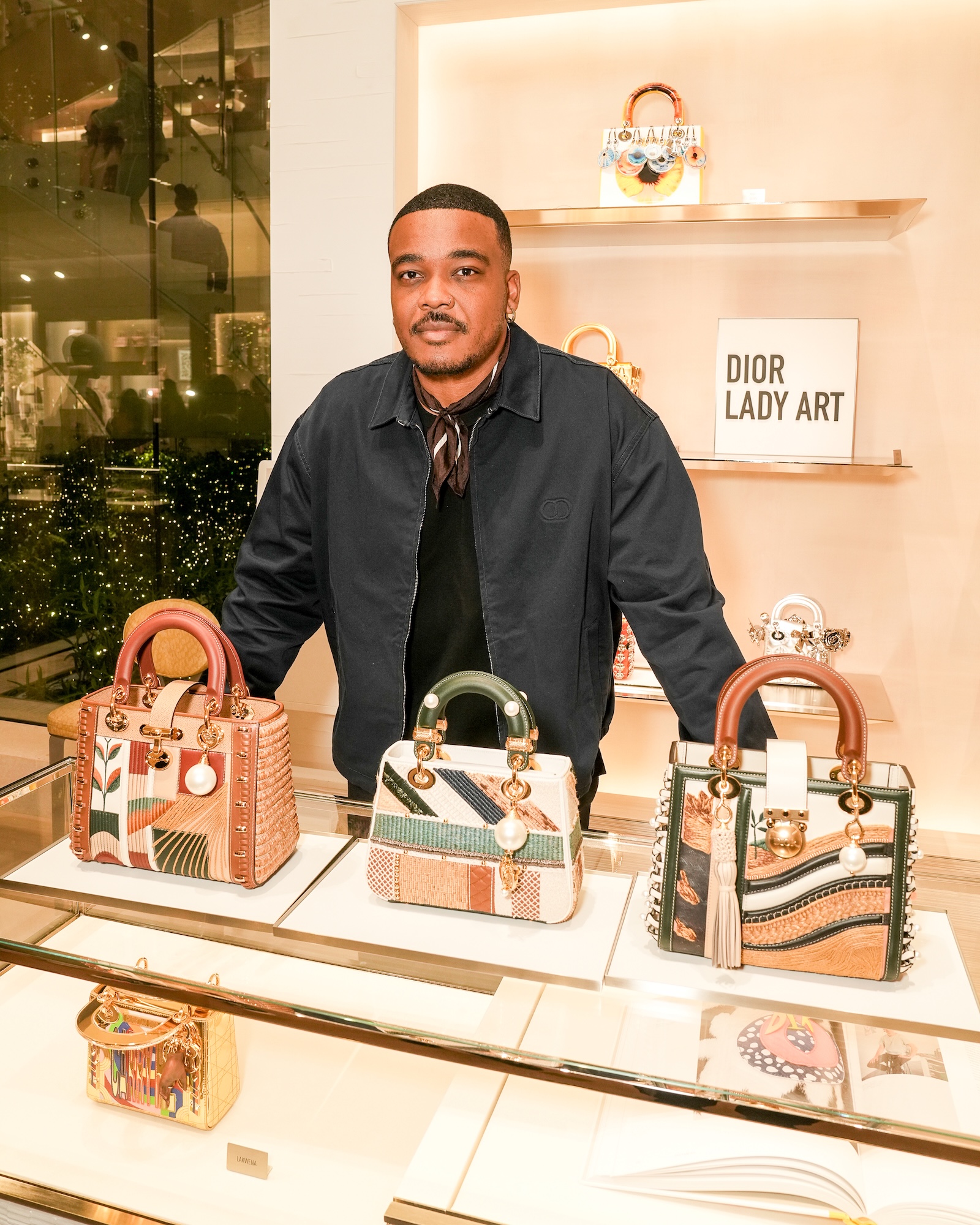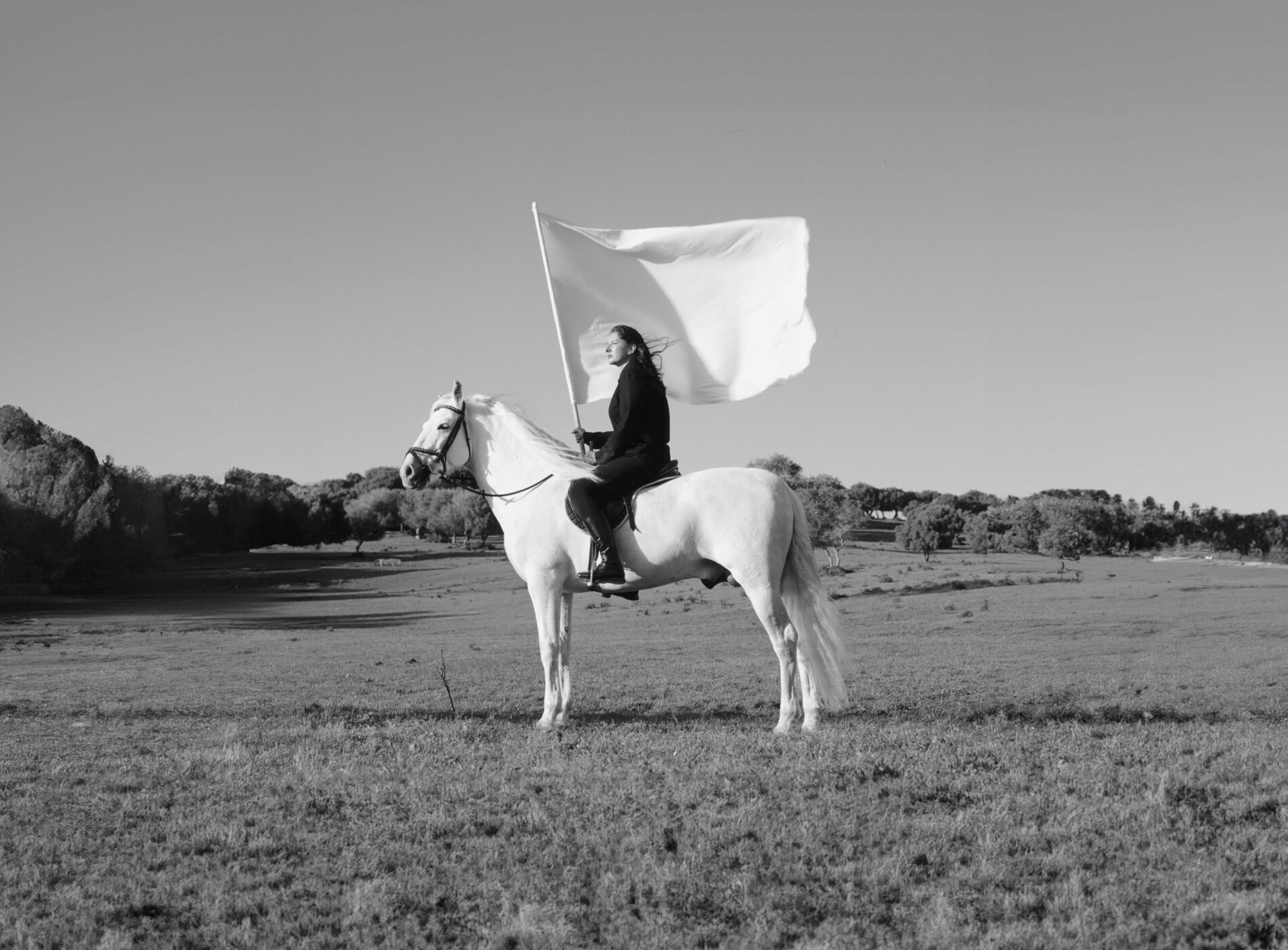

[Aisha Amin](https://aisha-amin.format.com/) is an artist and filmmaker who brings the experience of a historic Brooklyn mosque to The Shed’s gallery space in a four-channel immersive sound-and-video installation for [Open Call](https://theshed.org/program/series/15-open-call). Masjid At-Taqwa is a 40-year-old institution that is a pillar of Muslim life in Brooklyn, located in a quickly gentrifying part of the Bed-Stuy neighborhood.
_The Earth Has Been Made A Place Of Prayer_ is organized around four screens interspersing repurposed observational documentary footage, a soundscape derived from the interior of the mosque, and prayer mats facing towards Mecca to reflect the direction in which Muslims pray. By transforming aspects of a previous documentary film by the artist into a physical and 360-degree experience, Amin reconstructs a space that offers a haven, community, and meditative retreat to her and many other Muslim Americans. The installation celebrates openness, transparency, and dialogue between communities as a way to combat prejudice.
_Flaunt_ sat down with Amin to discuss _The Earth Has Been Made a Place of Prayer,_ her participation in The Shed. and what will come next.


**Can you tell me about Masjid At-Taqwa and why you chose it as the subject of this project?**
My interest in filming Masjid At-Taqwa stemmed from a photo project that I started a few years ago in an attempt to document storefront religious spaces - particularly mosques - in New York City. I was drawn to the contrast between religious and spiritual havens and the bustling and dense concrete jungle that surrounds them. How can these two elements live in symbiosis? I spent a lot of time observing these religious spaces and I began to learn that these were more than just physical buildings. They were a safe space particularly for immigrant and Muslim Americans living in New York City. Masjid At-Taqwa is one of the largest mosques in Brooklyn, NY. It was founded in 1981 by a small group of Muslim reverts who had been living in and around Brooklyn for their whole lives. Both the mosque’s genesis story and its location are what appealed to me the most. The building which houses the mosque was bought at an auction by a small group of Muslim men and women, and slowly expanded into a mosque. During this expansion, the founders of the mosque transformed the neighborhood. The block went from being quite dangerous with a heavy drug dealer presence at the height of New York’s crack epidemic to a neighborhood with new businesses, schools, and a bustling community of Muslim reverts. Now, Masjid At-Taqwa is located in a neighborhood that is undergoing intense real estate development and gentrification. The building has remained the same but the neighborhood is heavily changing. That feature of the mosque really interested me.
**Can you walk me through your process? Taking a real place and translating that same energy into an installation?**
What I really ended up deciding to do with the project was reconstructing my 9**\-**minute short documentary, ‘Friday’ into this video installation. The short film was very much a visual portrait of Masjid At-Taqwa - an attempt to communicate both its cultural significance and to also observationally visualize the Friday prayer. It was edited with the purpose of condensing it for a 2D and film viewing experience, but the concept of the film always asked for something more. Something that can be moved through and experienced in a more visceral way. When the opportunity came for me to expand the film, I knew what I really wanted to do was insert the film’s observers into the physical space of the mosque - a space that for myself and many others is a haven of safety, community and meditation but is too often associated with alienness and prejudice. In the end, I decided the best way to translate the concept of Friday prayer to an audience was to reconstruct the Masjid At-Taqwa prayer space inside of a gallery space, and to build a 3-dimensional visual structure and soundscape that would make the viewer feel as though they could be inside a real mosque. This was the truest way I could translate this very beautiful and important experience to an audience.
**How do you hope your audience interacts with this piece?**
I think for most artists, certainly, for myself, there is this yearning for connection and communication with an audience. We put ourselves, our personal experiences, our deepest thoughts and imaginations into an art form for others to consume in the hope that whoever is watching or reading or listening will, in that moment, feel connected to us. My installation is no different than that. It is an attempt at communication, at connection. I want to bring the audience into a space that for me, is associated with very personal and beautiful memories. I want them to feel the same sense of peace, spirituality and safety that I feel. Moreso, the fact that this is a physical installation means that it’s asking for a different level of engagement and attentiveness. It’s an engagement that is deeper and meant to be experienced fully rather than just watched. I think this is really where the idea to include authentic prayer mats came from. In a mosque, it is customary to take your shoes off and walk on the carpets barefoot. I wanted to mimic this experience inside of a gallery space. Giving the audience this option to more physically interact with the piece really, for me, takes it to the next level.


**What role do you think art plays in cultural awareness?**
I think art has a responsibility to be culturally aware, to respond to the times. Moreso, I think artists hold a great responsibility. I feel incredibly lucky and in a place of privilege to be able to do this work, and within that work comes a responsibility to respond to the things around me. I feel it’s a necessity that I put myself in places that are new, that I am constantly learning and working to uncover some deeper truths about humanity and society and culture so that I can go home and do the work and translate those experiences to folks who haven’t been in those same places. That, I think, is the role of an artist. My work is culturally aware because I have an almost obsession with learning and observing, and translating things I see to others.
**What can you tell me about the man narrating the video and why/how you chose him to be the voice of this piece?**
The man narrating the film is the same man you see in the archival footage during the first minute of the installation. His name is Imam Siraj Wahhaj and is the founder of Masjid At-Taqwa. In 1981, he gathered a group of individuals and went to an auction to purchase the building that now houses the mosque. Imam Siraj was born and raised in Brooklyn and has had an enormous impact on the community of Muslims in the borough. As a visual artist, I have always been drawn to archival material and how it is able to put modern stories into context. This particular archival footage is taken from a lecture Imam Siraj gave several years ago called “Mending Fences and Building Bridges”. In it, he speaks about the importance of community bonds and resilience. He also tells us the story of how he founded Masjid At-Taqwa. Imam Siraj has an incredible presence and although he is speaking to a group of people, when I watched the lecture I felt as though he was speaking directly to me. I worked closely with my sound designer, Udit Duseja to blend Imam Siraj’s story into the soundscape of the installation, so throughout the piece, we fall in and out of his anecdote and are able to grasp a better understanding of the history of the mosque.


**Why are you excited to be a part of the Shed’s** [**Open Call**](https://theshed.org/program/series/15-open-call)**?**
Open Call has been a fantastic experience from the very start. I always had the idea for this installation and I have always wanted to expand my practice into the installation world, but never had a clear understanding of how to do that. Just the mere fact that I had an opportunity to explore that idea through Open Call’s application was gratifying. It made me think about the kind of artist I can be. Throughout the process of producing this installation, I have learned so much about what it means to design and construct an installation. It is a blending of architecture, of sound design, of image-making, and of technical expertise. The Shed’s exhibitions team have been both collaborators and educators for me. That, and the fact that I will be showing work alongside other talented and emerging artists is a truly gratifying experience.
**Do you have any plans for what will come after The Earth Has Been Made a Place of Prayer?**
At the moment, I would really like to be able to show this installation in Brooklyn - the borough it was created in. I would like to engage and collaborate with arts institutions and non-profits like The Brooklyn Historical Society, The Brooklyn Academy of Music, and The Brooklyn Museum. For me, as long as the installation is around and seen by others, it provides an opportunity to educate groups of people on the importance of community resilience and gives them a very special piece of New York history. More personally, I would like to expand my filmmaking practice from traditional documentary towards video and sound art because I find the installation world to be a really exciting one. Some themes I find myself constantly drawn to are our spirituality, religious practices, and community resilience and I plan to explore these more through the mediums of film and photography.
More about the installation [here](https://www.youtube.com/watch?ab_channel=TheShed&v=P087eN4zxlg)
 
[Aisha Amin](https://aisha-amin.format.com/) is an artist and filmmaker who brings the experience of a historic Brooklyn mosque to The Shed’s gallery space in a four-channel immersive sound-and-video installation for [Open Call](https://theshed.org/program/series/15-open-call). Masjid At-Taqwa is a 40-year-old institution that is a pillar of Muslim life in Brooklyn, located in a quickly gentrifying part of the Bed-Stuy neighborhood.
_The Earth Has Been Made A Place Of Prayer_ is organized around four screens interspersing repurposed observational documentary footage, a soundscape derived from the interior of the mosque, and prayer mats facing towards Mecca to reflect the direction in which Muslims pray. By transforming aspects of a previous documentary film by the artist into a physical and 360-degree experience, Amin reconstructs a space that offers a haven, community, and meditative retreat to her and many other Muslim Americans. The installation celebrates openness, transparency, and dialogue between communities as a way to combat prejudice.
_Flaunt_ sat down with Amin to discuss _The Earth Has Been Made a Place of Prayer,_ her participation in The Shed. and what will come next.

[Aisha Amin](https://aisha-amin.format.com/) is an artist and filmmaker who brings the experience of a historic Brooklyn mosque to The Shed’s gallery space in a four-channel immersive sound-and-video installation for [Open Call](https://theshed.org/program/series/15-open-call). Masjid At-Taqwa is a 40-year-old institution that is a pillar of Muslim life in Brooklyn, located in a quickly gentrifying part of the Bed-Stuy neighborhood.
_The Earth Has Been Made A Place Of Prayer_ is organized around four screens interspersing repurposed observational documentary footage, a soundscape derived from the interior of the mosque, and prayer mats facing towards Mecca to reflect the direction in which Muslims pray. By transforming aspects of a previous documentary film by the artist into a physical and 360-degree experience, Amin reconstructs a space that offers a haven, community, and meditative retreat to her and many other Muslim Americans. The installation celebrates openness, transparency, and dialogue between communities as a way to combat prejudice.
_Flaunt_ sat down with Amin to discuss _The Earth Has Been Made a Place of Prayer,_ her participation in The Shed. and what will come next.
 
**Can you tell me about Masjid At-Taqwa and why you chose it as the subject of this project?**
My interest in filming Masjid At-Taqwa stemmed from a photo project that I started a few years ago in an attempt to document storefront religious spaces - particularly mosques - in New York City. I was drawn to the contrast between religious and spiritual havens and the bustling and dense concrete jungle that surrounds them. How can these two elements live in symbiosis? I spent a lot of time observing these religious spaces and I began to learn that these were more than just physical buildings. They were a safe space particularly for immigrant and Muslim Americans living in New York City. Masjid At-Taqwa is one of the largest mosques in Brooklyn, NY. It was founded in 1981 by a small group of Muslim reverts who had been living in and around Brooklyn for their whole lives. Both the mosque’s genesis story and its location are what appealed to me the most. The building which houses the mosque was bought at an auction by a small group of Muslim men and women, and slowly expanded into a mosque. During this expansion, the founders of the mosque transformed the neighborhood. The block went from being quite dangerous with a heavy drug dealer presence at the height of New York’s crack epidemic to a neighborhood with new businesses, schools, and a bustling community of Muslim reverts. Now, Masjid At-Taqwa is located in a neighborhood that is undergoing intense real estate development and gentrification. The building has remained the same but the neighborhood is heavily changing. That feature of the mosque really interested me.
**Can you walk me through your process? Taking a real place and translating that same energy into an installation?**
What I really ended up deciding to do with the project was reconstructing my 9**\-**minute short documentary, ‘Friday’ into this video installation. The short film was very much a visual portrait of Masjid At-Taqwa - an attempt to communicate both its cultural significance and to also observationally visualize the Friday prayer. It was edited with the purpose of condensing it for a 2D and film viewing experience, but the concept of the film always asked for something more. Something that can be moved through and experienced in a more visceral way. When the opportunity came for me to expand the film, I knew what I really wanted to do was insert the film’s observers into the physical space of the mosque - a space that for myself and many others is a haven of safety, community and meditation but is too often associated with alienness and prejudice. In the end, I decided the best way to translate the concept of Friday prayer to an audience was to reconstruct the Masjid At-Taqwa prayer space inside of a gallery space, and to build a 3-dimensional visual structure and soundscape that would make the viewer feel as though they could be inside a real mosque. This was the truest way I could translate this very beautiful and important experience to an audience.
**How do you hope your audience interacts with this piece?**
I think for most artists, certainly, for myself, there is this yearning for connection and communication with an audience. We put ourselves, our personal experiences, our deepest thoughts and imaginations into an art form for others to consume in the hope that whoever is watching or reading or listening will, in that moment, feel connected to us. My installation is no different than that. It is an attempt at communication, at connection. I want to bring the audience into a space that for me, is associated with very personal and beautiful memories. I want them to feel the same sense of peace, spirituality and safety that I feel. Moreso, the fact that this is a physical installation means that it’s asking for a different level of engagement and attentiveness. It’s an engagement that is deeper and meant to be experienced fully rather than just watched. I think this is really where the idea to include authentic prayer mats came from. In a mosque, it is customary to take your shoes off and walk on the carpets barefoot. I wanted to mimic this experience inside of a gallery space. Giving the audience this option to more physically interact with the piece really, for me, takes it to the next level.

**Can you tell me about Masjid At-Taqwa and why you chose it as the subject of this project?**
My interest in filming Masjid At-Taqwa stemmed from a photo project that I started a few years ago in an attempt to document storefront religious spaces - particularly mosques - in New York City. I was drawn to the contrast between religious and spiritual havens and the bustling and dense concrete jungle that surrounds them. How can these two elements live in symbiosis? I spent a lot of time observing these religious spaces and I began to learn that these were more than just physical buildings. They were a safe space particularly for immigrant and Muslim Americans living in New York City. Masjid At-Taqwa is one of the largest mosques in Brooklyn, NY. It was founded in 1981 by a small group of Muslim reverts who had been living in and around Brooklyn for their whole lives. Both the mosque’s genesis story and its location are what appealed to me the most. The building which houses the mosque was bought at an auction by a small group of Muslim men and women, and slowly expanded into a mosque. During this expansion, the founders of the mosque transformed the neighborhood. The block went from being quite dangerous with a heavy drug dealer presence at the height of New York’s crack epidemic to a neighborhood with new businesses, schools, and a bustling community of Muslim reverts. Now, Masjid At-Taqwa is located in a neighborhood that is undergoing intense real estate development and gentrification. The building has remained the same but the neighborhood is heavily changing. That feature of the mosque really interested me.
**Can you walk me through your process? Taking a real place and translating that same energy into an installation?**
What I really ended up deciding to do with the project was reconstructing my 9**\-**minute short documentary, ‘Friday’ into this video installation. The short film was very much a visual portrait of Masjid At-Taqwa - an attempt to communicate both its cultural significance and to also observationally visualize the Friday prayer. It was edited with the purpose of condensing it for a 2D and film viewing experience, but the concept of the film always asked for something more. Something that can be moved through and experienced in a more visceral way. When the opportunity came for me to expand the film, I knew what I really wanted to do was insert the film’s observers into the physical space of the mosque - a space that for myself and many others is a haven of safety, community and meditation but is too often associated with alienness and prejudice. In the end, I decided the best way to translate the concept of Friday prayer to an audience was to reconstruct the Masjid At-Taqwa prayer space inside of a gallery space, and to build a 3-dimensional visual structure and soundscape that would make the viewer feel as though they could be inside a real mosque. This was the truest way I could translate this very beautiful and important experience to an audience.
**How do you hope your audience interacts with this piece?**
I think for most artists, certainly, for myself, there is this yearning for connection and communication with an audience. We put ourselves, our personal experiences, our deepest thoughts and imaginations into an art form for others to consume in the hope that whoever is watching or reading or listening will, in that moment, feel connected to us. My installation is no different than that. It is an attempt at communication, at connection. I want to bring the audience into a space that for me, is associated with very personal and beautiful memories. I want them to feel the same sense of peace, spirituality and safety that I feel. Moreso, the fact that this is a physical installation means that it’s asking for a different level of engagement and attentiveness. It’s an engagement that is deeper and meant to be experienced fully rather than just watched. I think this is really where the idea to include authentic prayer mats came from. In a mosque, it is customary to take your shoes off and walk on the carpets barefoot. I wanted to mimic this experience inside of a gallery space. Giving the audience this option to more physically interact with the piece really, for me, takes it to the next level.
 
**What role do you think art plays in cultural awareness?**
I think art has a responsibility to be culturally aware, to respond to the times. Moreso, I think artists hold a great responsibility. I feel incredibly lucky and in a place of privilege to be able to do this work, and within that work comes a responsibility to respond to the things around me. I feel it’s a necessity that I put myself in places that are new, that I am constantly learning and working to uncover some deeper truths about humanity and society and culture so that I can go home and do the work and translate those experiences to folks who haven’t been in those same places. That, I think, is the role of an artist. My work is culturally aware because I have an almost obsession with learning and observing, and translating things I see to others.
**What can you tell me about the man narrating the video and why/how you chose him to be the voice of this piece?**
The man narrating the film is the same man you see in the archival footage during the first minute of the installation. His name is Imam Siraj Wahhaj and is the founder of Masjid At-Taqwa. In 1981, he gathered a group of individuals and went to an auction to purchase the building that now houses the mosque. Imam Siraj was born and raised in Brooklyn and has had an enormous impact on the community of Muslims in the borough. As a visual artist, I have always been drawn to archival material and how it is able to put modern stories into context. This particular archival footage is taken from a lecture Imam Siraj gave several years ago called “Mending Fences and Building Bridges”. In it, he speaks about the importance of community bonds and resilience. He also tells us the story of how he founded Masjid At-Taqwa. Imam Siraj has an incredible presence and although he is speaking to a group of people, when I watched the lecture I felt as though he was speaking directly to me. I worked closely with my sound designer, Udit Duseja to blend Imam Siraj’s story into the soundscape of the installation, so throughout the piece, we fall in and out of his anecdote and are able to grasp a better understanding of the history of the mosque.

**What role do you think art plays in cultural awareness?**
I think art has a responsibility to be culturally aware, to respond to the times. Moreso, I think artists hold a great responsibility. I feel incredibly lucky and in a place of privilege to be able to do this work, and within that work comes a responsibility to respond to the things around me. I feel it’s a necessity that I put myself in places that are new, that I am constantly learning and working to uncover some deeper truths about humanity and society and culture so that I can go home and do the work and translate those experiences to folks who haven’t been in those same places. That, I think, is the role of an artist. My work is culturally aware because I have an almost obsession with learning and observing, and translating things I see to others.
**What can you tell me about the man narrating the video and why/how you chose him to be the voice of this piece?**
The man narrating the film is the same man you see in the archival footage during the first minute of the installation. His name is Imam Siraj Wahhaj and is the founder of Masjid At-Taqwa. In 1981, he gathered a group of individuals and went to an auction to purchase the building that now houses the mosque. Imam Siraj was born and raised in Brooklyn and has had an enormous impact on the community of Muslims in the borough. As a visual artist, I have always been drawn to archival material and how it is able to put modern stories into context. This particular archival footage is taken from a lecture Imam Siraj gave several years ago called “Mending Fences and Building Bridges”. In it, he speaks about the importance of community bonds and resilience. He also tells us the story of how he founded Masjid At-Taqwa. Imam Siraj has an incredible presence and although he is speaking to a group of people, when I watched the lecture I felt as though he was speaking directly to me. I worked closely with my sound designer, Udit Duseja to blend Imam Siraj’s story into the soundscape of the installation, so throughout the piece, we fall in and out of his anecdote and are able to grasp a better understanding of the history of the mosque.
 
**Why are you excited to be a part of the Shed’s** [**Open Call**](https://theshed.org/program/series/15-open-call)**?**
Open Call has been a fantastic experience from the very start. I always had the idea for this installation and I have always wanted to expand my practice into the installation world, but never had a clear understanding of how to do that. Just the mere fact that I had an opportunity to explore that idea through Open Call’s application was gratifying. It made me think about the kind of artist I can be. Throughout the process of producing this installation, I have learned so much about what it means to design and construct an installation. It is a blending of architecture, of sound design, of image-making, and of technical expertise. The Shed’s exhibitions team have been both collaborators and educators for me. That, and the fact that I will be showing work alongside other talented and emerging artists is a truly gratifying experience.
**Do you have any plans for what will come after The Earth Has Been Made a Place of Prayer?**
At the moment, I would really like to be able to show this installation in Brooklyn - the borough it was created in. I would like to engage and collaborate with arts institutions and non-profits like The Brooklyn Historical Society, The Brooklyn Academy of Music, and The Brooklyn Museum. For me, as long as the installation is around and seen by others, it provides an opportunity to educate groups of people on the importance of community resilience and gives them a very special piece of New York history. More personally, I would like to expand my filmmaking practice from traditional documentary towards video and sound art because I find the installation world to be a really exciting one. Some themes I find myself constantly drawn to are our spirituality, religious practices, and community resilience and I plan to explore these more through the mediums of film and photography.
More about the installation [here](https://www.youtube.com/watch?ab_channel=TheShed&v=P087eN4zxlg)

**Why are you excited to be a part of the Shed’s** [**Open Call**](https://theshed.org/program/series/15-open-call)**?**
Open Call has been a fantastic experience from the very start. I always had the idea for this installation and I have always wanted to expand my practice into the installation world, but never had a clear understanding of how to do that. Just the mere fact that I had an opportunity to explore that idea through Open Call’s application was gratifying. It made me think about the kind of artist I can be. Throughout the process of producing this installation, I have learned so much about what it means to design and construct an installation. It is a blending of architecture, of sound design, of image-making, and of technical expertise. The Shed’s exhibitions team have been both collaborators and educators for me. That, and the fact that I will be showing work alongside other talented and emerging artists is a truly gratifying experience.
**Do you have any plans for what will come after The Earth Has Been Made a Place of Prayer?**
At the moment, I would really like to be able to show this installation in Brooklyn - the borough it was created in. I would like to engage and collaborate with arts institutions and non-profits like The Brooklyn Historical Society, The Brooklyn Academy of Music, and The Brooklyn Museum. For me, as long as the installation is around and seen by others, it provides an opportunity to educate groups of people on the importance of community resilience and gives them a very special piece of New York history. More personally, I would like to expand my filmmaking practice from traditional documentary towards video and sound art because I find the installation world to be a really exciting one. Some themes I find myself constantly drawn to are our spirituality, religious practices, and community resilience and I plan to explore these more through the mediums of film and photography.
More about the installation [here](https://www.youtube.com/watch?ab_channel=TheShed&v=P087eN4zxlg)

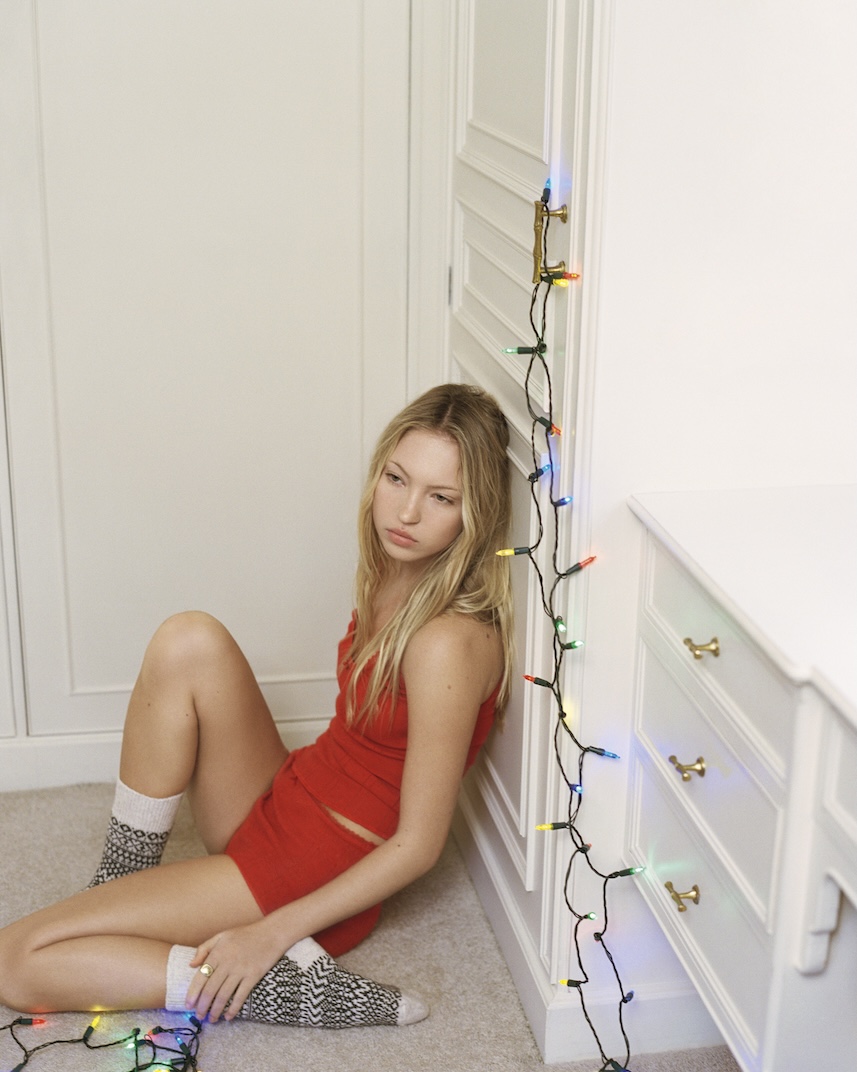
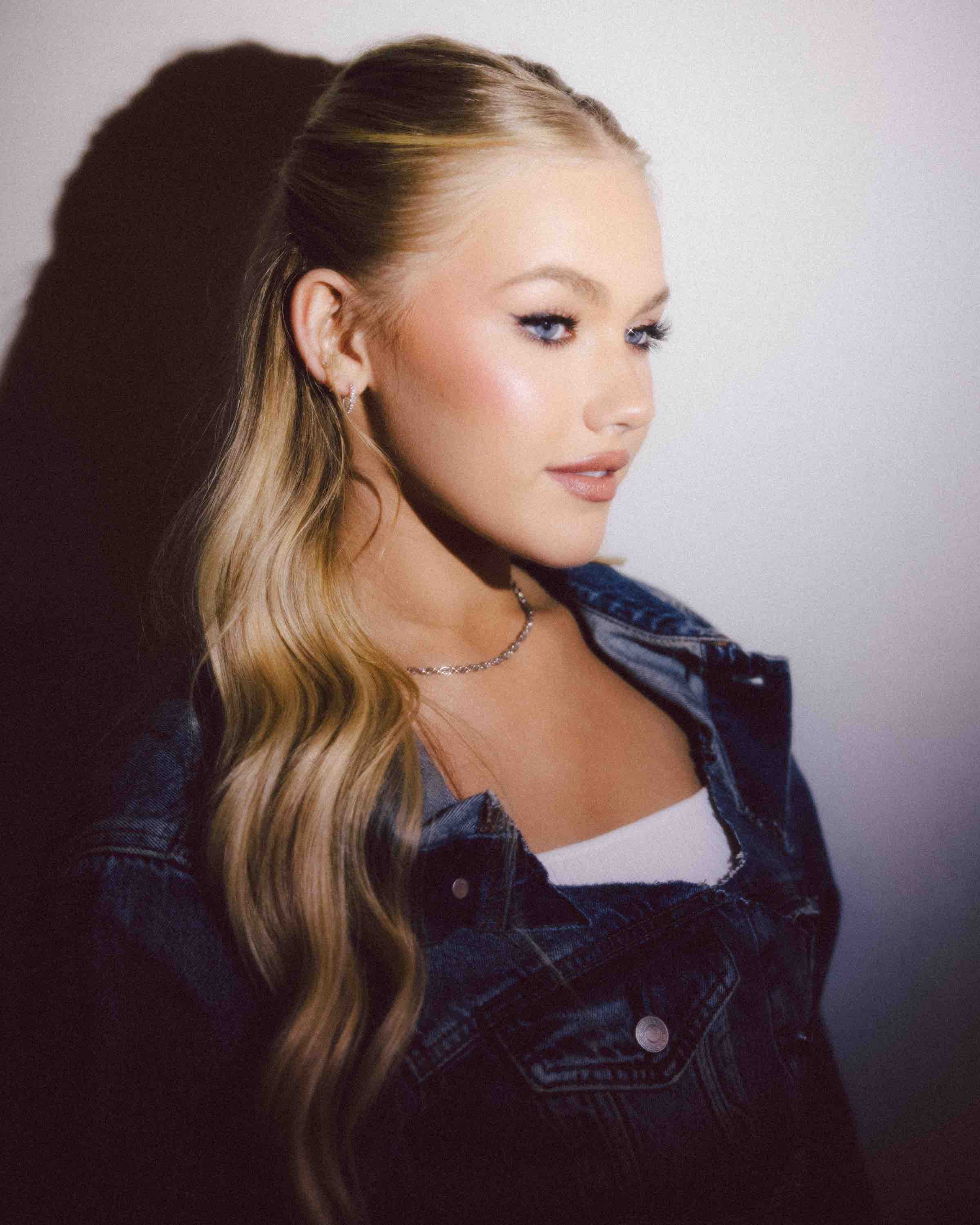
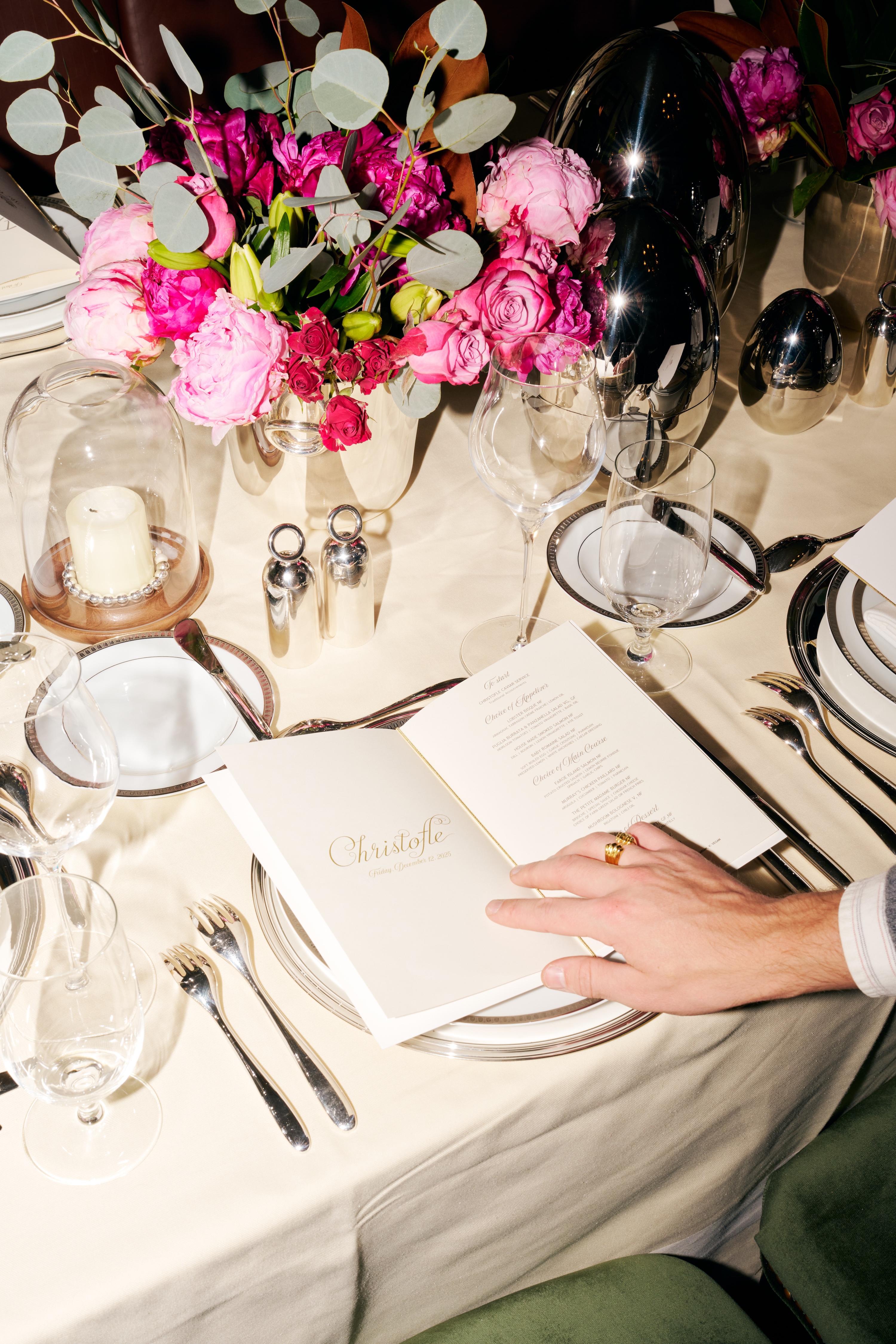

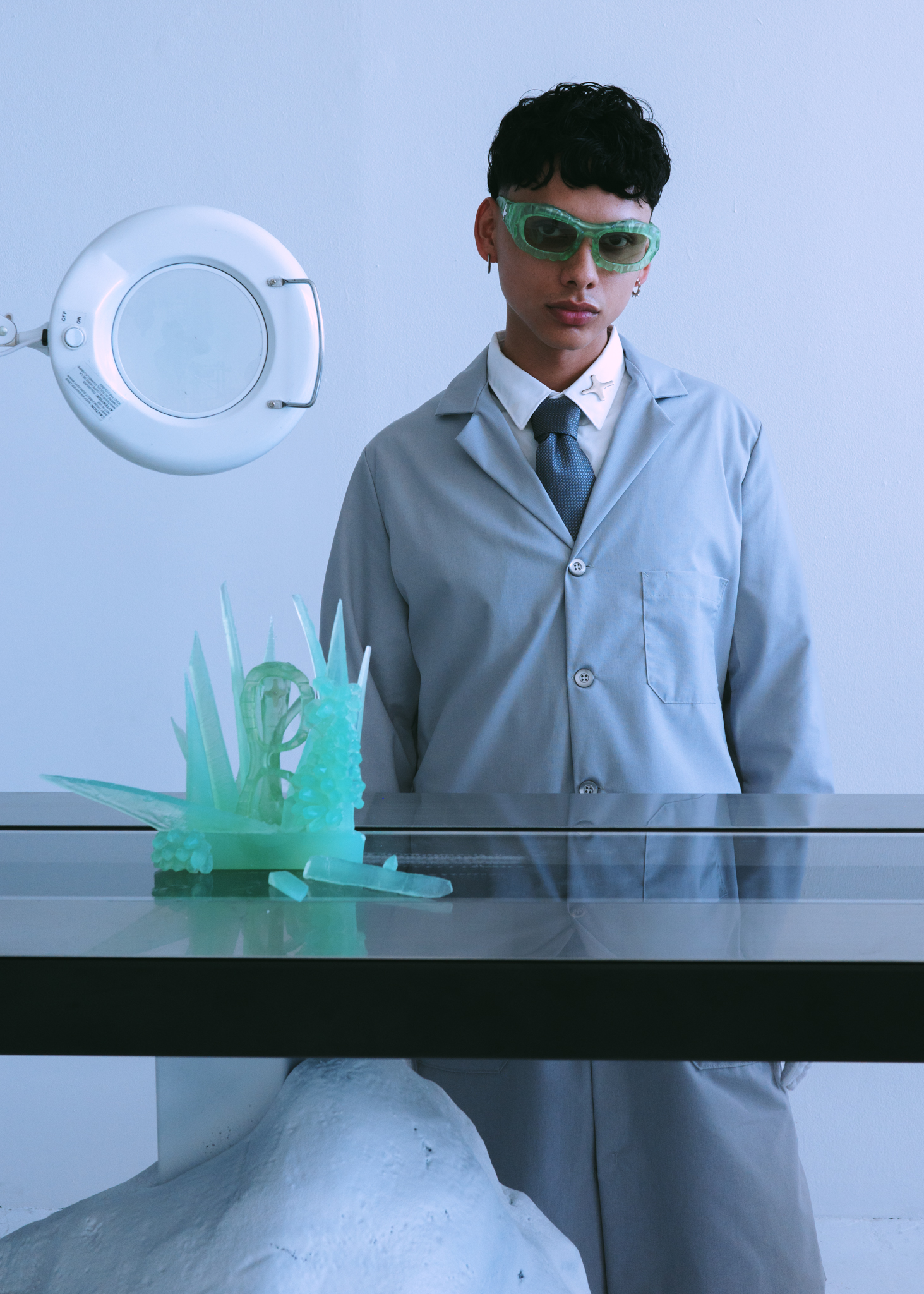
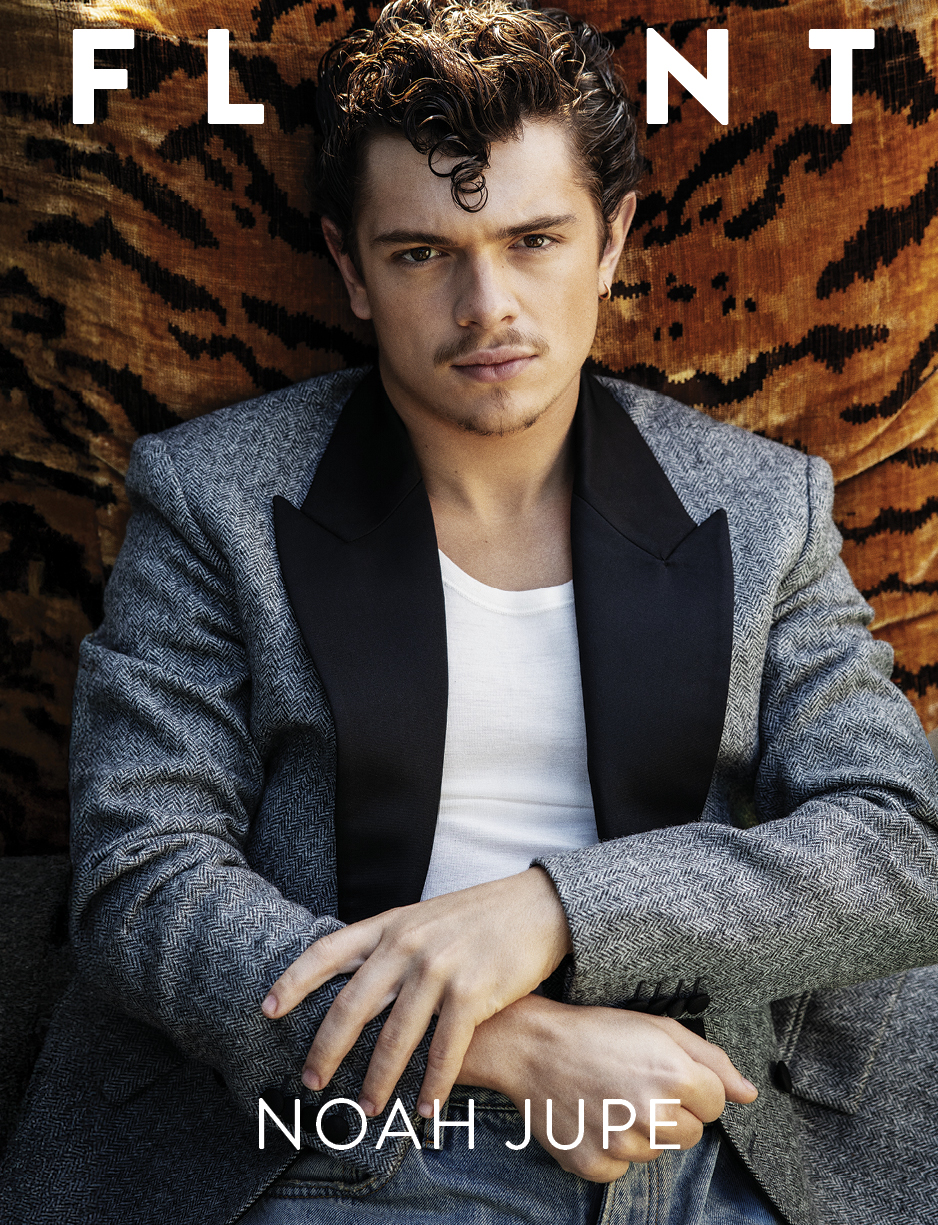
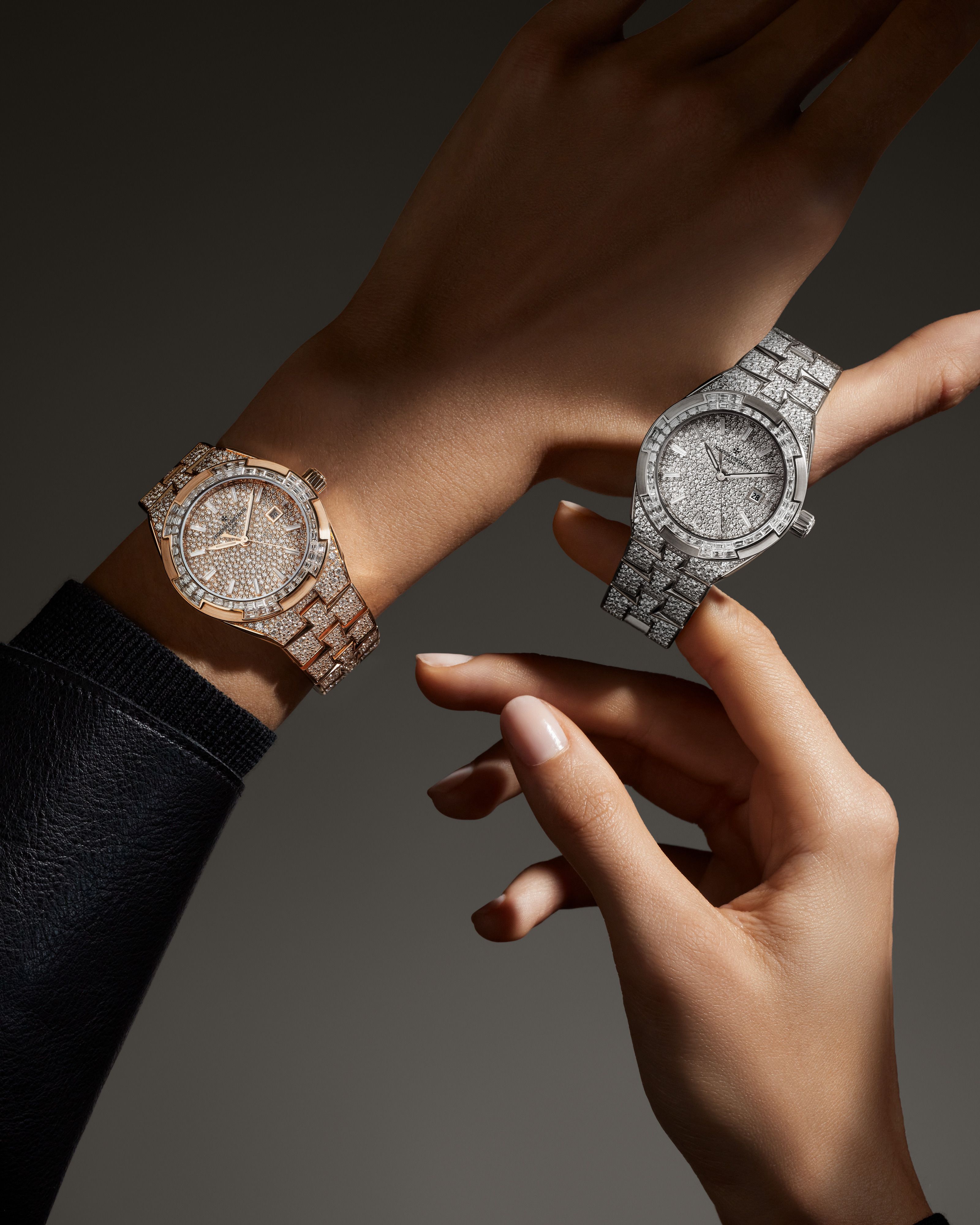

.JPG)
.jpg)
